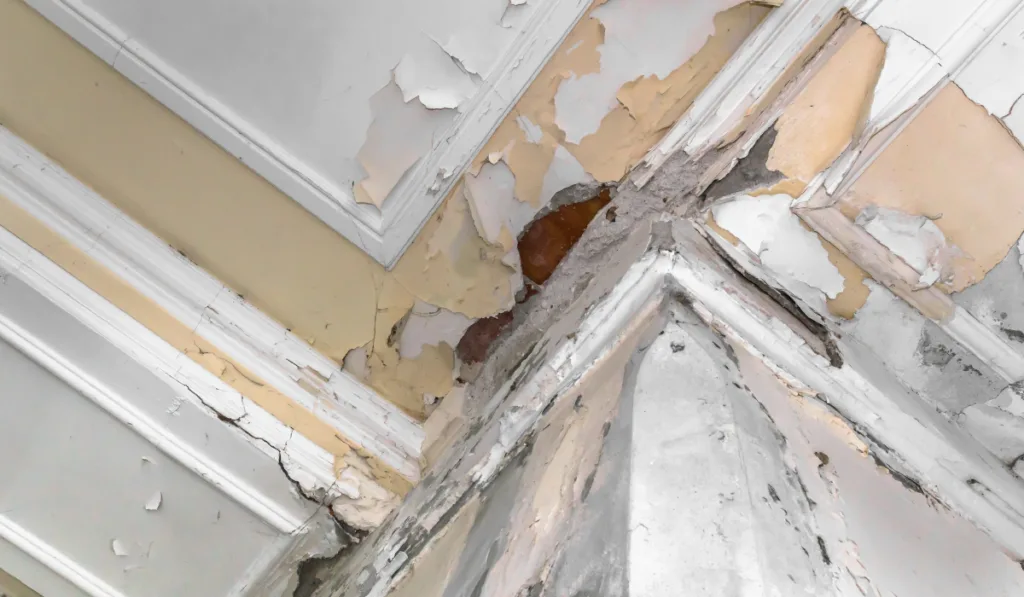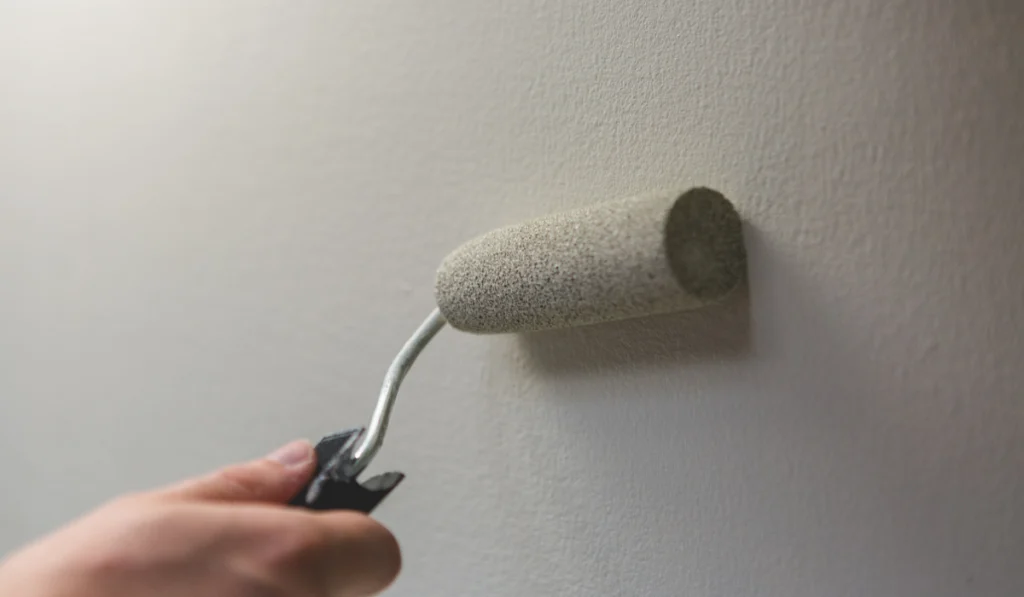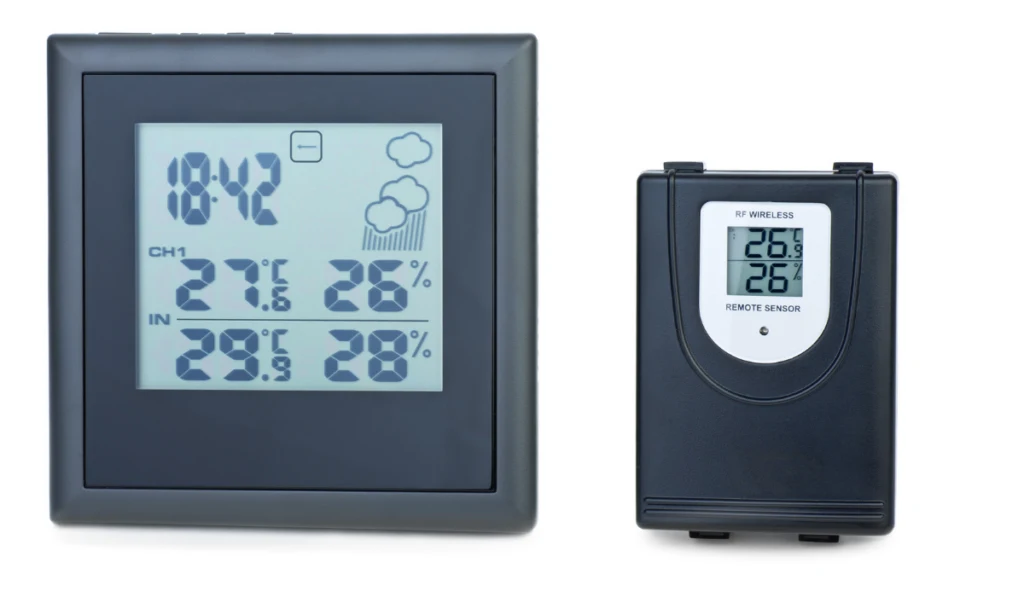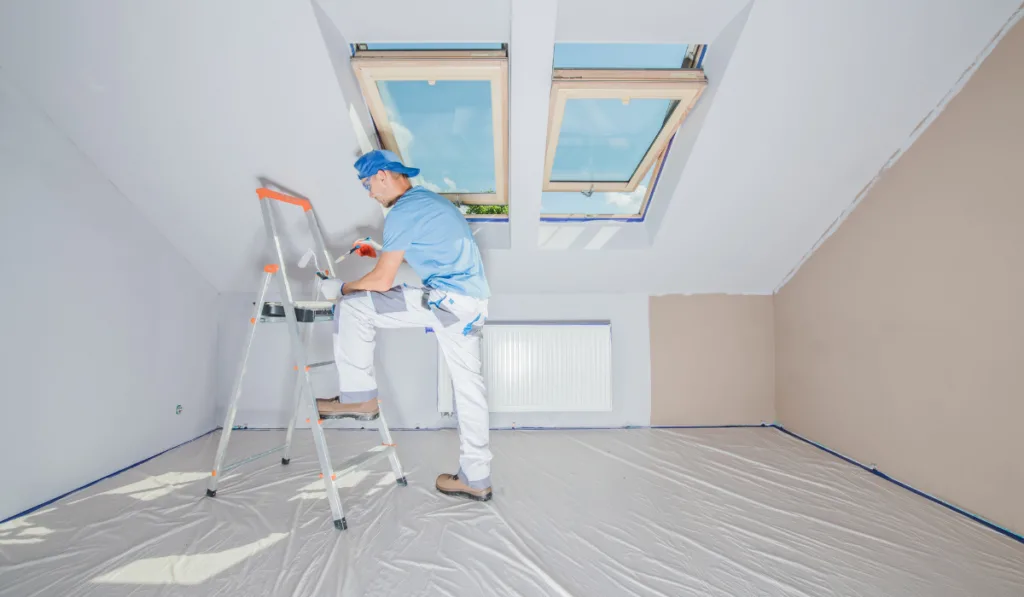*This post may have affiliate links, which means I may receive commissions if you choose to purchase through links I provide (at no extra cost to you). As an Amazon Associate, I earn from qualifying purchases. Please read my disclaimer for additional details.
Under normal circumstances, when you apply trim paint, it should dry within 24 hours. But sometimes, things do not happen as they should. Many days after application, trim paint may still be wet and sticky, leaving you wondering why.
Why is your trim paint sticky?
Your trim paint can be sticky for various reasons, including high humidity, recoating too early, inappropriate primer use, wrong paint type, and more. Many of the causes of sticky trim paint are easy to fix. Once you figure out the problem, rectifying it is usually non-complicated.
This article discusses the various causes of sticky trim paints and ways to fix the problem of sticky paint. So, when done reading, you should have a solution.
Table of Contents
Causes of Sticky Trim Paint
High Humidity

It is not uncommon for people to have issues with their paint when there’s high humidity. This is why experts recommend painting in low humidity conditions.
If you paint your interior space when it’s humid, it will not dry as it should. Consequently, it may become sticky and remain sticky long after painting.
The basic process behind the drying of paint is solvent evaporation. But when the humidity is high, the surrounding air contains a lot of moisture.
With a lot of moisture in the air, the space (air) the paint solvent would escape to is already brimming with water. Consequently, the solvent evaporation rate would be slower, and the paint would not dry as it should.
When painting anything at all, you should only paint at low humidity levels.
Generally, humidity levels between 40% and 70% are ideal. But the range varies for different types of paint, so check before painting.
Also, avoid painting immediately after rain. When it rains, humidity typically rises. Of course, you already know this will not be great for your paint.
Besides the humidity in the air, take note of the moistness of the surfaces you intend to paint. If surfaces you want to paint are damp, they can cause sticky paint, just like elevated humidity can.
Excessive Coat Layers and Hasty Recoating
Too many layers of paint might leave your trim paint sticky. Apart from that, recoating too early can also make your paint sticky.

When you add more coats of paint before the previous coats are dry, those lower layers will not receive sufficient air and sunlight for proper drying. Consequently, all the paint layers will be sticky to some degree.
The top coat may feel dry, but it will feel squishy when you press the paint.
Every paint type has a specific drying time, and you must stick to that time for the best finish.
Cold Temperatures
Painting in cold temperatures can make your trim paint sticky in the same way as high humidity.
The evaporation of paint solvent is typically much faster in hotter temperatures. So, if your environment is too cold when you are painting, the drying time will be long, and you may end up with sticky trim paint.

Generally, temperatures between 50°F and 80°F are ideal for paint to dry.
But ideal drying temperatures may vary for different paint types. So, before you get on with painting, confirm what works best for the paint you intend to use.
Incompatible Paint-Surface Pairing
In many cases, the surfaces you will paint inside your home will be wooden.
So, incompatible paint-surface pairing may not apply. But then, it is a possibility.
If your trim paint is sticky and the surface is not wooden, there is a good chance the paint and the surface are incompatible. Hence, the stickiness.

Wood is compatible with most, if not all, types of paints.
So, you wouldn’t have stickiness when you apply trim paint to wooden surfaces. But with anything besides wood, confirm compatibility with your paint.
Inappropriate Primer Use
Primers can help keep your trim paint from being sticky. At the same time, they can make your paint sticky. It all depends on how you use them.

Paint primers primarily serve as an undercoat; apply them before applying paint. They enhance the sticking power of the paint to the painted surface.
So, when you use them, you don’t have to apply as many coats of paint.
Of course, if you work with fewer coats of paint, the chances of your trim paint remaining sticky drops.
The benefits of primers only manifest when you pair them with the correct paint. If you use them with the wrong paint type, you will end up with sticky trim paint.
On the brighter side, most trim paints do not require primer. So, if you followed the instructions, you won’t have sticky trim paint for this reason.
How to Fix Sticky Trim Paint
Below, we discuss how to fix sticky trim paint in line with the causes highlighted above.
Let the Paint Dry in Low Humidity
Get a hygrometer and check the humidity in your home. If your indoor humidity exceeds 70%, there’s a good chance that that’s the reason your trim paint is sticky.

After figuring out that your interior is too humid, lower the humidity. Home accessories like air conditioners, dehumidifiers, and exhaust fans can help you reduce indoor humidity.
Besides those accessories, fixing water leaks, drying laundry outdoors, and opening your windows can reduce humidity.
Once the humidity in your indoor space is down, the paint should dry accordingly.
Warm the Room to Dry the Paint
If the weather is too cold for your trim paint to dry, you could try warming up the room to speed up the process.
If you prefer not to warm the room up, you could heat the painted surface with a hairdryer. Please don’t hold it too close to the paint, though.
Wait
If you applied excessive coat layers on the painted surface, you could choose to wait for the paint to dry. That might take several weeks.
In other words, you may wait until humidity drops for the paint to dry. You may also wait for the weather to become warmer.
However, the paint will eventually dry and become non-sticky.
If you prefer not to wait, you could scrape the sticky paint off and repaint it when conditions are more favorable.
Apply Absorbent Substances
Applying absorbent substances on sticky painted surfaces can help remove the stickiness.
Substances like talcum powder and flour will absorb some of the moisture keeping the trim paint wet. Of course, the paint becomes dry and less sticky when they do.

Talcum powder and flour would work perfectly on white paint, but they could create a new problem when applied to other paint colors. So, consider this before using them.
Also, when dealing with large surfaces, apply the talcum powder or flour only to the sticky parts. And make sure that you can easily brush off the powder before applying it to the wall.
Auto Wax
You could apply auto wax to the painted surface to deal with stickiness.
While auto wax will not make the surface dry, it will provide a protective layer to prevent the paint from coming off while it is drying.
This fix is mainly helpful for paint on doors and door frames.
Repaint
If all your efforts to fix your paint stickiness fail, you could repaint. Just scrape the sticky paint off and start over.

The downside to this option is the time and money you have to spend repainting. But if nothing works, this might be your only option.
How to Prevent Sticky Trim Paint
Paint in Low Humidity
As indicated earlier, painting in low humidity will prevent sticky trim paint.
In low humidity, solvent evaporation is faster. So, the paint can dry quickly, and you won’t have to worry about it getting sticky.
Ensure You Wait Long Enough Before Recoating
Read the directions on the paint can before you start painting.
Ensure you wait as long as recommended before you recoat. All the coat layers will correctly dry if you do.
Work With Oil-Based Paint

While oil-based paints take longer to dry, they are less likely to become mushy when dry. So, you could work with oil-based paint to reduce the chances of having sticky paint.
Apply a Primer
If the paint you are working with is primer-compatible, working with primer can improve adhesion and prevent stickiness.
Final Thoughts
Your trim paint might be sticky because of the painting conditions, materials, or method. Whatever the case, you could wait to see if the trim paint eventually dries.
You could also improve the painting conditions to see if the paint dries. But if none of your interventions work, you could repaint.
Resources
- https://thediyplan.com/why-is-paint-sticky-or-tacky/
- https://www.houzz.com/discussions/3178580/why-is-the-paint-on-our-interior-doors-and-trim-sticky-after-cleaning
- https://www.hunker.com/13412884/why-is-my-interiorexterior-semi-gloss-sticky
- https://pickypens.com/how-to-fix-sticky-paint-on-doors/
- https://www.huskyair.com/blog/reducing-indoor-humidity/
